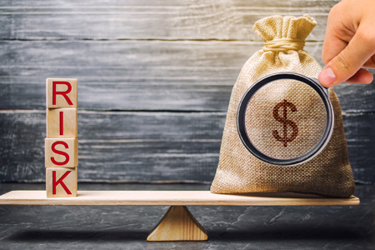Are We Adequately Assessing U.S. Pharma Supply Chain Risks?
By Thomas V. Giannone, Avison Young

As the COVID-19 pandemic continues to evolve at a rapid pace, it has revealed numerous fields for inquiry, debate, and consideration. Among them is the U.S.’s preparedness to react to the potential risks of a global supply chain. Without entertaining the blame game, it is reasonable to surmise that we were not adequately prepared for this COVID-19 crisis. In particular, our dependence on a global healthcare system — evidenced by the recent lack of PPE and, to a lesser degree, disruption to the supply chain of essential pharmaceutical drugs — has revealed evident gaps in our preparedness. History has shown that gaps, especially in a global context, can lead to disastrous consequences.
Gaps also exist today in our country’s collective knowledge required to determine the severity of the current pandemic’s risk to our supply chain for drugs. Undoubtedly, these gaps will remain, leaving questions that need to be answered and will, hopefully, serve as a road map for legislators and advocates of the industry.
In this two-part article, we will look first at how dependent the U.S. pharmaceutical supply chain is on critical ingredients produced overseas, especially in China and India, and the risks that could pose to the nation’s drug supply. In the second part, we will examine potential solutions to mitigate the risks and ensure the security of our drug supply.
The Complexity Of The Pharmaceutical Supply Chain
The U.S. pharmaceutical supply chain is complex for many reasons, including the variety of components needed in the final form of a drug. These components resulting in the final dosage form (FDF) include APIs, the active pharmaceutical ingredients that establish a drug’s efficacy; KSMs, the key starting materials that are the raw materials and intermediates of a drug substance; and excipients, which are formulated alongside the API and serve many purposes, including long-term stabilization and bulking up the API.
Since an API produces the intended effect of the drug, its production is key to the safety of the supply chain. To manufacture APIs for sale in the U.S., facilities must be pre-approved by the FDA. There are 1,788 FDA approved manufacturing facilities across the globe, distributed as follows:

China and India have the potential to manufacture the greatest quantity of APIs, but the pharmaceutical supply chains in both countries are particularly complex and interdependent. China is the world’s largest supplier of APIs, and as of 2018 ranks second among countries that export drugs and biologics to the U.S. APIs manufactured by China also come to the U.S. as part of FDFs manufactured in other countries such as India.
It has been concluded by industry experts that the percentage of APIs produced by China for the U.S. is likely underrepresented by the export numbers, as China is also a major supplier of APIs for other countries. This lack of a reliable API registry makes it difficult to estimate the true market share of Chinese-made APIs. India is ranked as the world’s main supplier of generic drugs, supplying up to 50 percent of all U.S. generics; however, India also imports nearly 70 percent of its APIs from China.
Until more data is available on China’s API production, it is helpful to evaluate the importation of APIs contained in branded vs. generic drugs. Dr. Gerard Anderson, a professor of health policy and international health at Johns Hopkins University, has been quoted as saying that the U.S. is generally at a low risk of using API produced in India or China when it comes to branded drugs. Pfizer spokeswoman Kimberly Becker says less than 2 percent of its APIs and key materials are sourced from China, and David A. Ricks, the CEO of Eli Lilly, has publicly stated that all of Lilly’s APIs are manufactured in either Europe or the U.S. However, we remain dependent on international sources of generic drugs, especially because generic drugs are based on price competition.
It can be concluded that the U.S. dependency on APIs can be traced through the supply chain of generic pharmaceuticals. Due to the plethora of generic drugs on the market and the focus of the U.S. healthcare system on encouraging the use of generic drugs for cost control reasons, it is helpful to determine which drugs are essential to the health of the U.S. population.
A list of “essential” vs. “nonessential” drugs, known as the Essential Medicines List, is published by the World Health Organization (WHO) and is updated biannually. Essential drugs are those that meet the most important needs in a health system. Currently, the WHO classifies 462 drugs as “essential” on the EML and, according to the World Intellectual Property Organization, 95 percent of the drugs on the WHO’s EML are off-patent (generics) and the roughly 5 percent remaining are largely antivirals. Three WHO essential drugs are only manufactured in China.
Therefore, the focus on the origin of generic drugs and their components, specifically APIs, is critical to the evaluation of the risk to the U.S. supply chain. The FDA matched 370 drugs on the EML with products that are marketed in the U.S., including drugs for medical countermeasures (MCM) to counter biological, chemical, nuclear, or radiation threats and influenza. The FDA’s Center for Drug Evaluation and Research (CDER) maintains a site catalog of all manufacturing facilities making drugs for the U.S. market, including the facilities for these 370 drugs.

Concerning the critical MCM drugs, many of which are contained in the U.S.’s Strategic National Stockpile, China has 21 percent of the API sites for meeting biological threats and 7 percent for chemical threats.
Unfortunately, drawing conclusions from the existing data has limitations. Although FDA-approved, these facilities may actually not be producing APIs. Manufacturers are not required to report if they are producing APIs and at what quantity. Drugs from these APIs may be exported to both the U.S. and other countries, while some APIs distributed in the U.S. are formulated in FDFs that are then exported. Some FDF applications list various API suppliers but with no required visibility as to which supplier was used.
Assessing The Risk
The potential risks for the U.S. pharmaceutical supply chain are ultimately defined by shortages of drugs and/or critical drug components. The vital links in any drug supply chain include APIs, KSMs, and excipients, with APIs being the most critical. However, we all know that a chain is only as strong as its weakest link.
As outlined above, sources of overseas manufacturing include countries whose national interests conflict to varying degrees with the interests of the U.S. The COVID-19 situation has certainly raised the issue of our dependency on API production in China, as addressed by Senator Tom Cotton when he stated, “a Chinese Communist Party propaganda outlet insinuated that Beijing could cut off supplies of life-saving medicine to the United States at any time.”
Meanwhile, India restricted the export of 26 APIs and FDFs, saving them for domestic use and implemented a 21-day shutdown of nearly all services starting March 25, which would have an inevitable impact upon its ability to supply drugs. However, India agreed to lift the export ban on hydroxychloroquine at President Trump’s urging.
According to FDA Commissioner Stephen Hahn, despite the current exposure, the FDA has not seen a shortage of APIs sourced from China as a result of the COVID-19 pandemic, but the FDA is “closely monitoring the situation.” He added, “We don’t have any evidence that there’s a drug in short supply because of anyone blocking APIs coming to us from China.”
However, we don’t know how much of China’s API output reaches the U.S. market through other countries. To further assess the risks associated with the security of the nation’s drug supply, we need to know more about our dependence on foreign sources of API. We need to ask questions such as what volume of APIs is being produced at each facility in India/China for the U.S. market and what percentage of U.S. drug consumption this represents as well as how much is distributed in the U.S. market vs. exported to other countries.
We also need to understand the resilience of the U.S. domestic manufacturing base to meet demand if supply is cut off.
For example, how much unused capacity exists in U.S. facilities? What percentage of total needs does this represent if less than 100 percent? How long would it take to increase capacity and at what cost? In addition, it’s important that we get a better handle on the reliability of the facilities that make quality products for the U.S. market.
The bottom line is that there’s no way of knowing if U.S.-based API manufacturing facilities could fulfill the requirements if a foreign country stopped producing our required APIs. In addition, the feasibility for the U.S. to construct new facilities is limited under current manufacturing practices.
In Part 2 of this series, we will look at the advantages that China and India have over the U.S. in manufacturing APIs and whether “on-shoring” production of these critical materials is the most effective way to mitigate the risks to our drug supply chain in the long term.
About The Author:
 Tom Giannone is a principal in Avison Young’s Occupier Solutions group in AY’s New Jersey office and is a founder of its Life Sciences Specialty Practice Group. For more than 25 years, Giannone has specialized in developing real estate solutions for the life sciences industry. He holds a M.S. in engineering from Rutgers University and an MBA from New York University.
Tom Giannone is a principal in Avison Young’s Occupier Solutions group in AY’s New Jersey office and is a founder of its Life Sciences Specialty Practice Group. For more than 25 years, Giannone has specialized in developing real estate solutions for the life sciences industry. He holds a M.S. in engineering from Rutgers University and an MBA from New York University.
